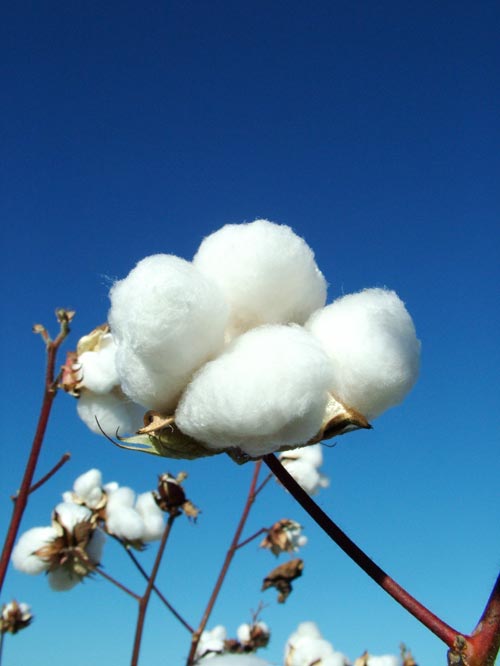
Cotton fiber -- it's not just for wearing
In Phoeniz, Ariz., an innovative company is turning used denim cotton jeans into home insulation.In Center, Ala., cotton trash is turned into high quality mulch which is sprayed onto landscaping projects to prevent erosion.At Texas A&M in College Station, Texas, a team of researchers is working on removing gossypol from cottonseed to expand its feed usage.

The age-old cotton plant is going through a number of transformations that are creating demand beyond cotton’s traditional use in apparel and home furnishings, according to Cotton Incorporated CEO Berrye Worsham, speaking before producers at the Cotton and Rice Conservation Tillage Conference in Baton Rouge, La.
Here are few examples:
Home insulation made out of your old blue jeans.In Phoenix, Ariz., an innovative company is turning used denim cotton jeans into home insulation. Those old, cherished blue jeans are collected shredded, bundled into huge bales, processed and shaped into a high quality insulation. It’s a transformation that has captured national attention.
Gossypol-free cottonseed.At Texas A&M, College Station, Texas, a team of researchers is working on removing gossypol from cottonseed to expand its feed usage. Currently, cottonseed with gossypol can be fed only to cows — whose unique stomachs allow them to digest it. But using genetic engineering, scientists have developed a new variety of cotton plant with no gossypol in its seed. It opens a huge resource for cottonseed in human nutrition, directly as food or indirectly as feed for poultry and pork.
Oil spill cleanup.In Milwaukee, Wis., a company transforms raw cotton fiber into oil-absorbent booms and pads. The product is natural and sustainable and was recently put to the test in the Gulf of Mexico oil spill disaster. The product performed to everyone’s expectations.
Cotton as packing material.In New York, a company blends cotton trash with the roots of mushrooms to grow a product called EcoCradle, which performs like Styrofoam. It grows in just one week and is a very energy- and water-efficient process. The result is a packing material for packing furniture or electronics that is all natural. When you’re through with the product, you can break it up and toss it on your garden. It will break down in a few months.
Conductive cotton.At Cornell University in Ithaca, N.Y., cotton researchers are using nano technology to coat cotton threads with microscopic particles enabling the fabric to conduct electricity. Conductive yarns can be woven into clothing for sensing heart rate and create color without the use of dyes. So a black dress can change color with the flip of a switch.
Cotton as a mulch.In Center, Ala., cotton trash is turned into high-quality mulch which is sprayed onto landscaping projects to prevent erosion.
Cotton in the Army.In Lubbock, Texas, Texas Tech researches are turning raw cotton into a material that can help soldiers who are victims of chemical warfare. The cotton is cleaned, processed and turned into a thin smooth fabric. When carbon is sandwiched between two cotton layers, the result is a fabric that can be used as wipes by soldiers to absorb chemical toxins. The fabric has been awarded a patent and is being used by the Pentagon.
Cotton prices are exciting and optimism is high for cotton producers. But to stay on top, the cotton industry has to remain focused on several factors, according to Worsham.
Input costs.Input costs are going to rise, especially as prices rise, Worsham said. “We’re going to have to do everything we can to conduct research to maximize the benefit of inputs so we can get the most bang for our buck.”
The environment.The cotton industry is undertaking an extensive life cycle analysis not only for growing cotton but for processing cotton. “The research is to gauge where our environmental footprint is and what we can do with research to reduce that footprint. That includes using less energy and water use in the dyeing and finishing processes.”
The energy crisis.“Our research has shown that rising energy prices can have a negative impact on cotton demand. As energy prices rise, people have less money to heat and cool their houses, so they have less discretionary income. One of the things that could be crowded out are apparel and home furnishings.”
Global markets.“We still rely heavily on the export market for cotton. That is going to continue, so whatever we can do to work the global supply chain is going to be important.”
New products using cotton.“We’ve been working for several years on moisture management to help cotton compete with synthetics. There was a major announcement recently by Under Armour that they will incorporate a cotton product called Charged Cotton into their apparel offerings.”
About the Author(s)
You May Also Like





